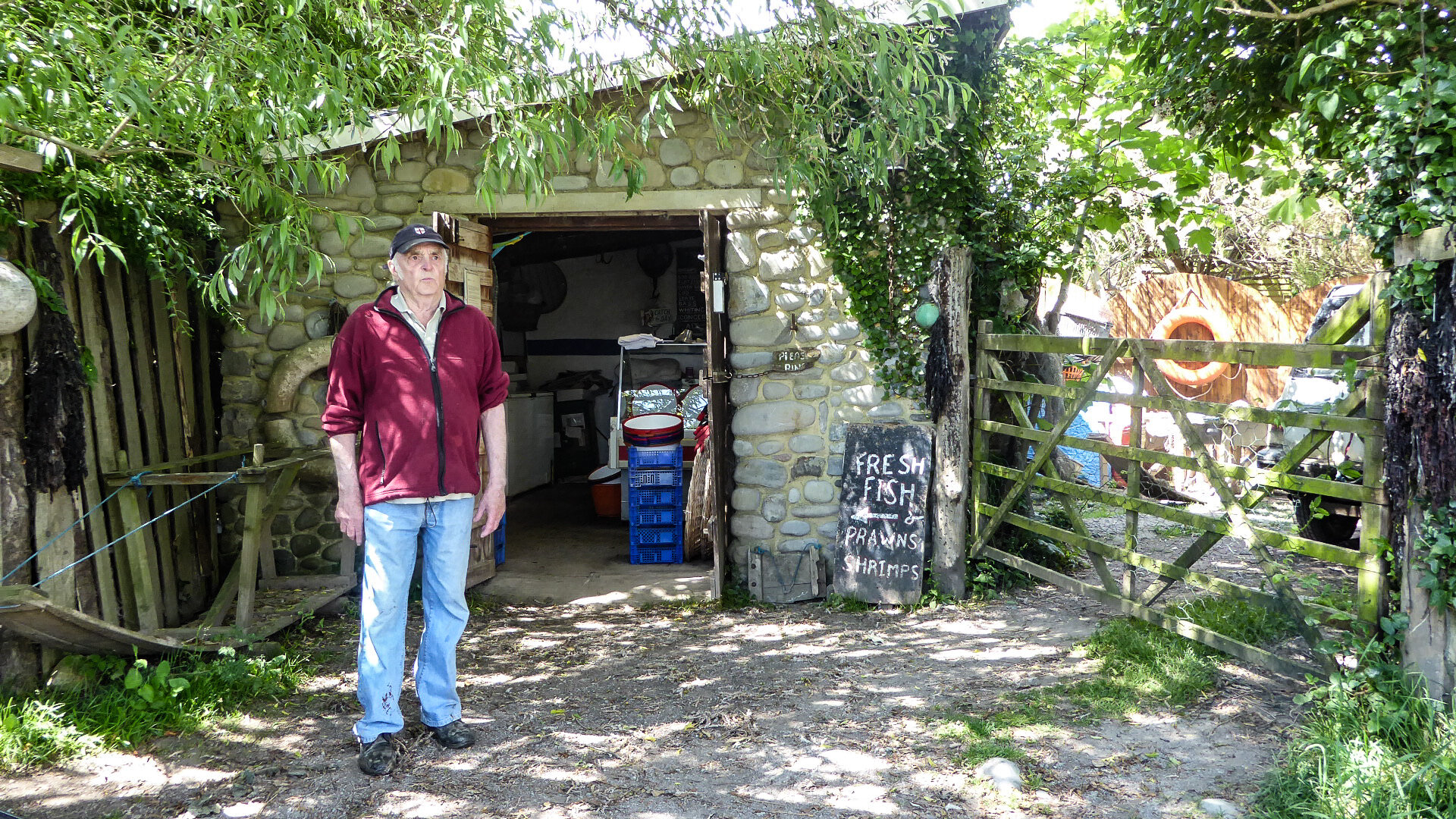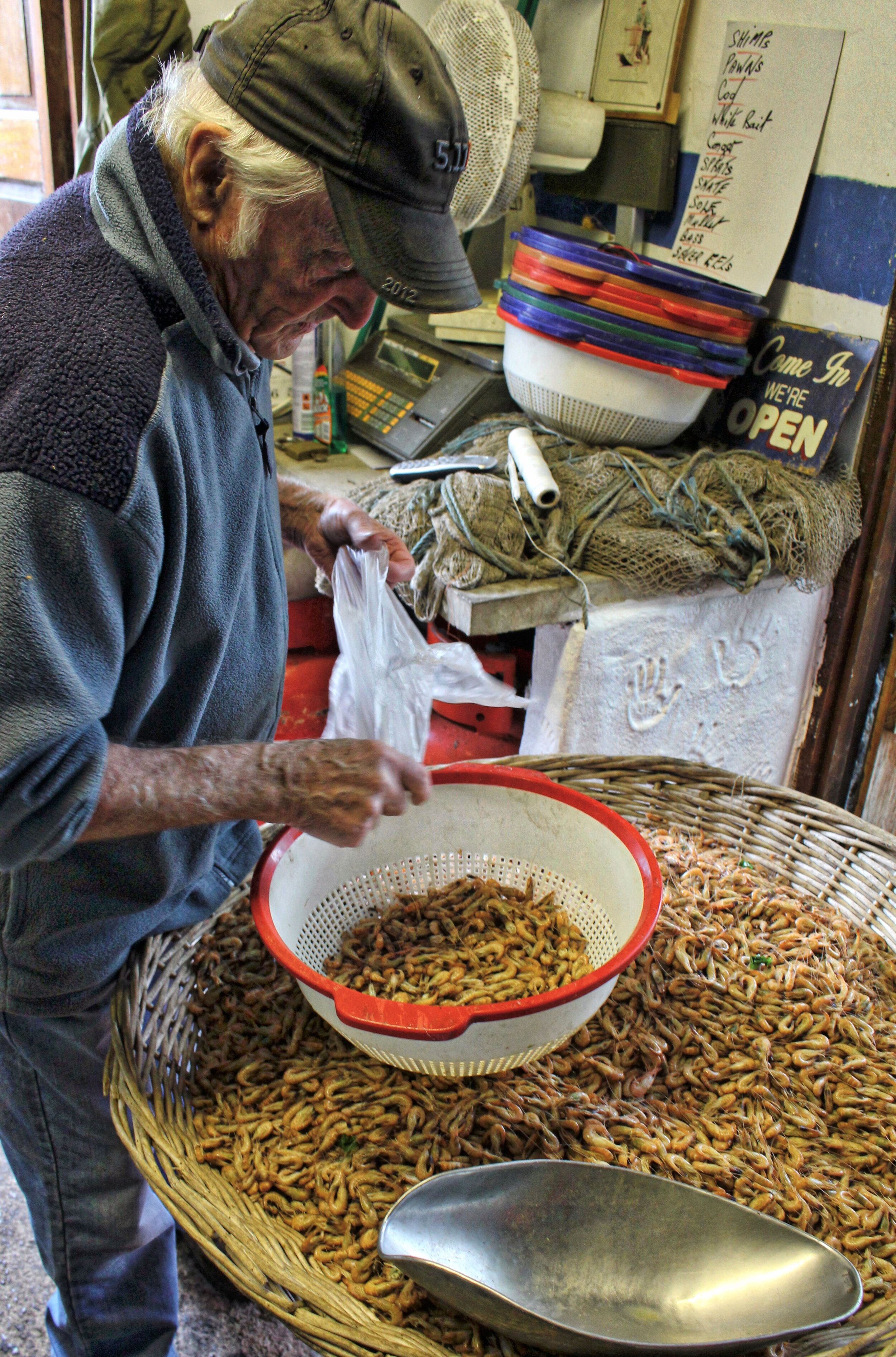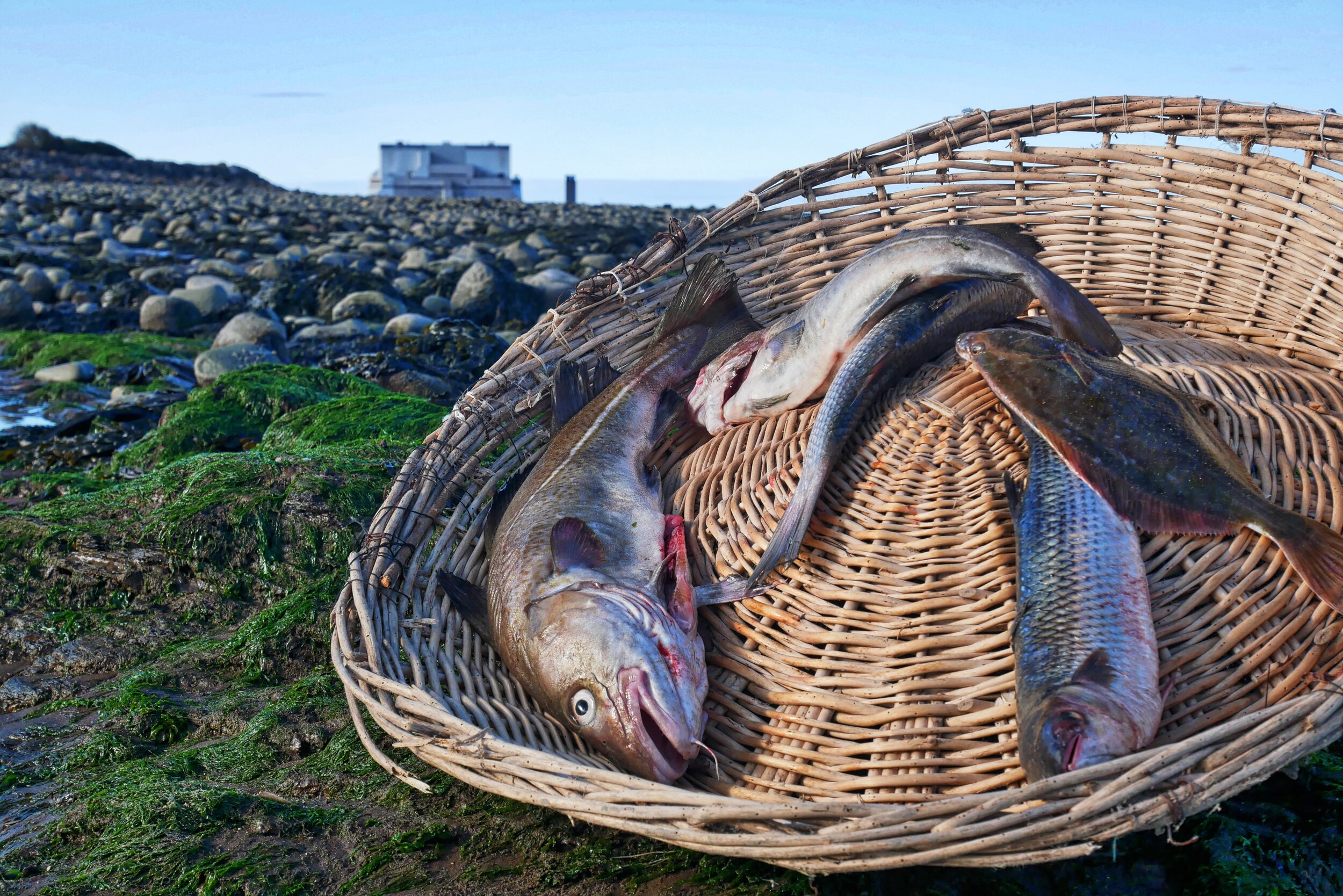The Passing of Brendan Sellick - Mud-horse Fisherman
My old friend Brendan Sellick passed away recently and his family asked if I’d write a tribute for the newspapers - which I am glad to say was carried widely in various weekly and daily titles. The Western Morning News gave old Bren’ an entire page - which he deserved. So did the West Somerset Free Press.
Anyway, I thought I’d put up the tribute here for those who didn’t see the papers…
I took this photo of Brendan Sellick nearly 40-odd years ago
A three thousand year-old way of life came to an end on the West Somerset coast recently when the death of well known Stolford mud-horse fisherman, Brendan Sellick, was announced.
The unique Bridgwater Bay fishery, which relied for centuries on a particular design of wooden sledge known as a mud-horse, once supported dozens of families living in remote hamlets around the vast mud-flats of the Parrett estuary. But the fishery fell into a decline during the Second World War and continued to shrink until only the Sellick family continued wending their way out across the dangerous expanse of mud to the shingle banks more than a mile from the foreshore.
Brendan in more recent times
Often described by the countless journalists who interviewed him as the “world’s last mud-horse” fisherman, Brendan (who died aged 86 ) was in fact succeeded by his son, but on Wednesday Adrian Sellick announced he’d be giving up professional fishing with immediate effect.
“I bounced off Father, and he bounced off me. Without him I just cannot do it any more,” said Adrian, effectively bringing to an end a fishery which dates back to the Bronze Age.
One of Brendan’s old mud-horse
Archaeologists have found the well-preserved remains of an ancient mud-horse buried deep in the peat near Glastonbury, on the nearby Somerset Levels. It shared a design almost identical to the wooden sleds built and used by Brendan Sellick during his lifetime.
The long curving plank, mounted with a trestle structure, allowed mud-horse fishermen to carry their heavy dripping baskets of fish as well as any nets which needed to be replaced or repaired. Forward motion was provided by the fisherman himself, who was required to lean the weight of his upper body over the trestle while his legs churned through the mud.
It was tough and potentially dangerous work. The incoming rate of the second-highest tide-fall in the world could overtake a person who did not have the support of the gliding mud-horse. But the all-important forward motion had to be maintained at around trotting speed as the fisherman negotiated the treacherous mud-flats.
“We tried to replace the mud-horse once with a ski-mobile,” Brendan once told me. “And we worked it for two seasons to keep us poor. The trouble was that the fine silt in the mud kept getting into it and messing up all the bearings.”
So, like his father, great grandfather and great, great grandfathers before him, Brendan stuck to Bronze Age technology - and, in his rich Somerset dialect, was glad to share his family's salty history with anyone who had the time to listen in the ramshackle shed near Stolford’s breakwater where he sold the fish.
Brendan and his son Adrian making their way off the beach at Stolford
“Great great grandad was a stonemason from up Nether Stowey, who came down here courting a fisher-girl. 'Look 'ere,' she says to 'im, 'there's plenty of stonemasons but there's only a few mud-horse fishermen.' And that's how we started down here.
“There was six or seven families involved with it on this side of Bridgwater Bay when I was a boy, but one by one they've all dropped away and now I'm the only one left. I really am the world's last mud-horse fisherman,” said Brendan at a time just before Adrian agreed to come in with the fishing.
The truly delicious brown shrimps from Stolford
“I’ve done mud-horse fishing man and boy. My father, William Henry Sellick, did it - and his father Jack, and his, called Thomas. The first year I went out would have been about 1939 – pushed out as a three year old in the basket.”
Brendan started going out on the mud as a professional at the age of 14. “I was doing it before, then I took it on myself and haven’t stopped since. Yes it’s hard – cold enough to skin you alive sometimes. I remember one February my father took a big rake out for the cod and coddling – you couldn’t use your hands they were so cold.”
As for the strangest fish ever to fetch up in the Sellick family nets, Brendan recalled: “It was a 90-pound sturgeon. My father had seen it feeding up and down for a day or two, breaking his nets as it went. But the day he caught it - I can see him now - hauling the gurt thing up the beach on his shoulder, as wide as a couple of of farm gate posts.
“Then he brought it in the shed and asked me and another boy to sit on its side so he could deal with it. But it was still breathing and it's gills going in and out and we were too scared.”
Brendan's livelihood depended upon a number of what used to be called "fixed engines" - or long sock-like nets located on a spit of shingle on the outer edge of the mud-flats. All manner of fish were caught including sea-bass, grey mullet, sole and skate, cod, plaice, dog-fish, sprats, hake and octopus.
Brendan sorting the cooked shrimp
“Even I can get frightened out there,” Brendan once told me. “In fog it’s very difficult - everything looks the same. You don’t know if you’re in the tide or in the mud, or where you are. I’ve been a bit upset sometimes.
“What I really don’t like is being caught in thunder and lightning. The flash goes off and you can look for miles and all of a sudden it’s pitch black. You’re out there, wet through, drenched to the skin, and the whole place vibrates so much it’s like you’re in the bowels of the earth.
“There were two brothers who used to go out from here. One night one of them slipped and drowned. The other brother was looking for him, but it was no good. That other brother never went out ever again.”
Another potential danger that has threatened this most historic of fisheries has been the invisible menace lurking in the vast nuclear reactors nearby.
“We thought Hinkley Point might do for us,” admitted Brendan. “The scientists have been coming since it was built. They buy samples of our fish and they’ve never ever found anything detrimental. And it’s not only the nuclear people, the county council environment department does the same..
“But they've never found a thing wrong. They’d have to pension us off if they did and sometimes I wish they would and then I could retire,” he used to joke.
Brendan dealing with grey mullet - a much maligned but delicious fish
But it was a joke. Brendan Sellick lived and breathed his tough hard mud-horse fishing work in a way in which is rare today.
And who knows, one of Brendan’s daughters, Sarah Dray, commented this week: “Dad does have 15 grandchildren who might like to continue his legacy in the future. I don’t think Dad would like it to be The End.”
I shall hugely miss going to see Brendan and Adrian and buying a boot-load of fabulous fish















